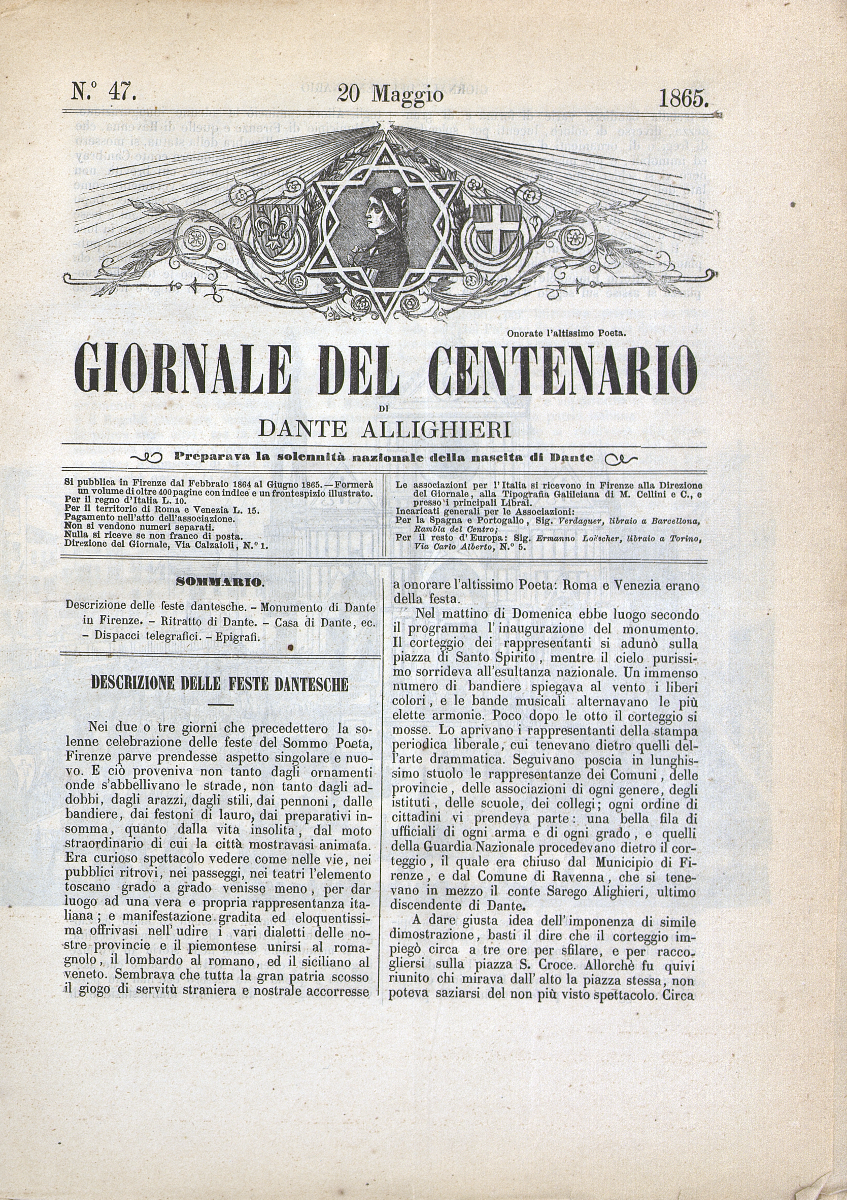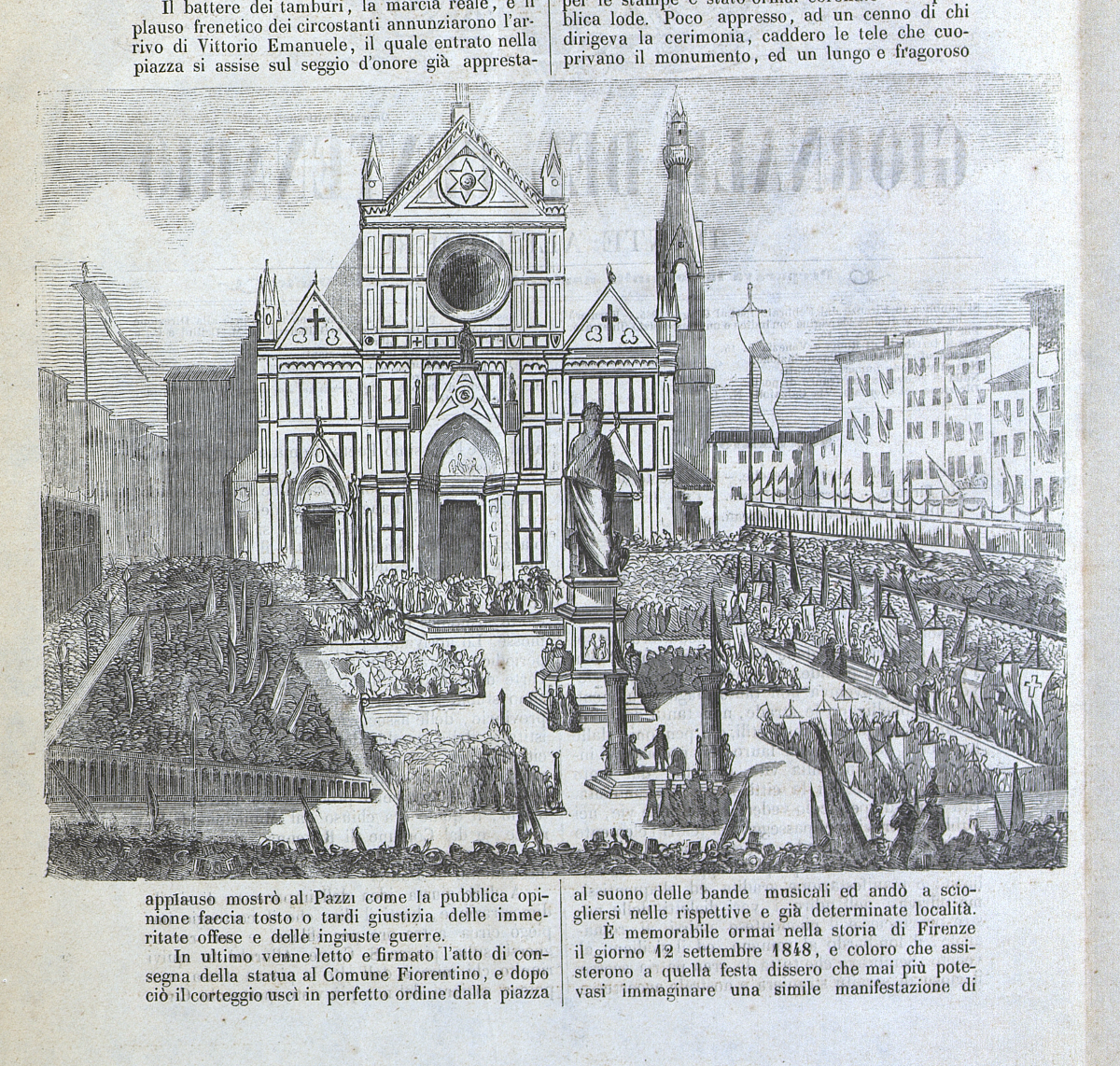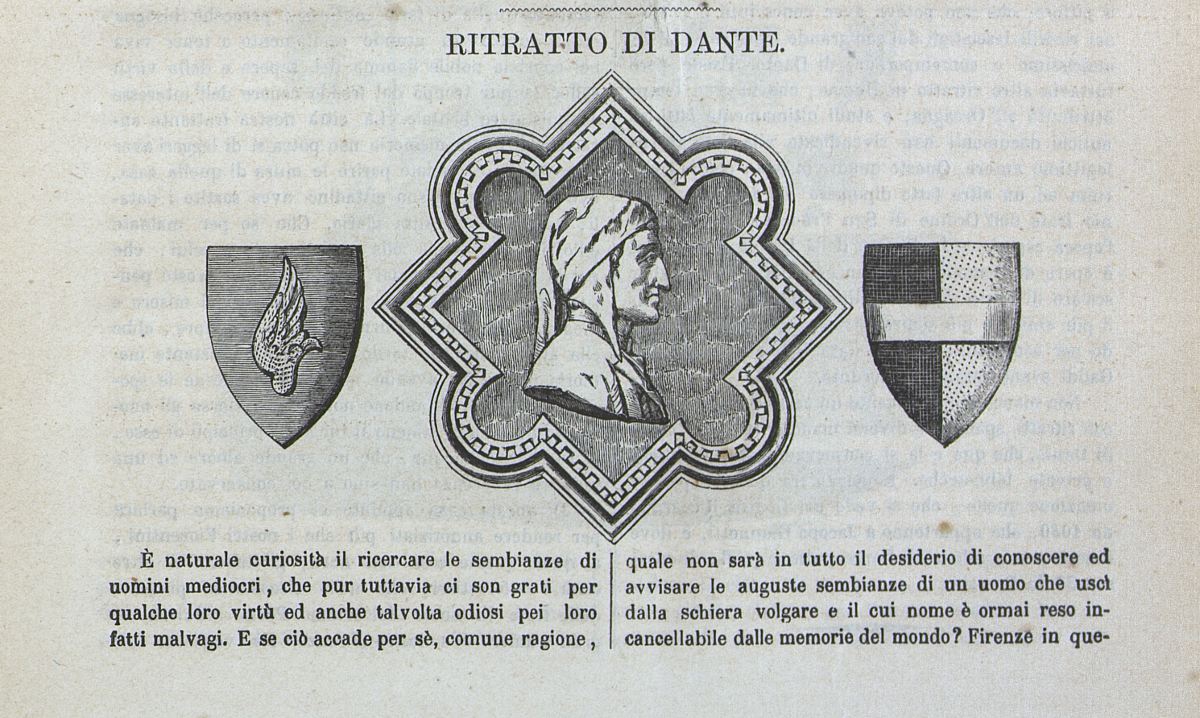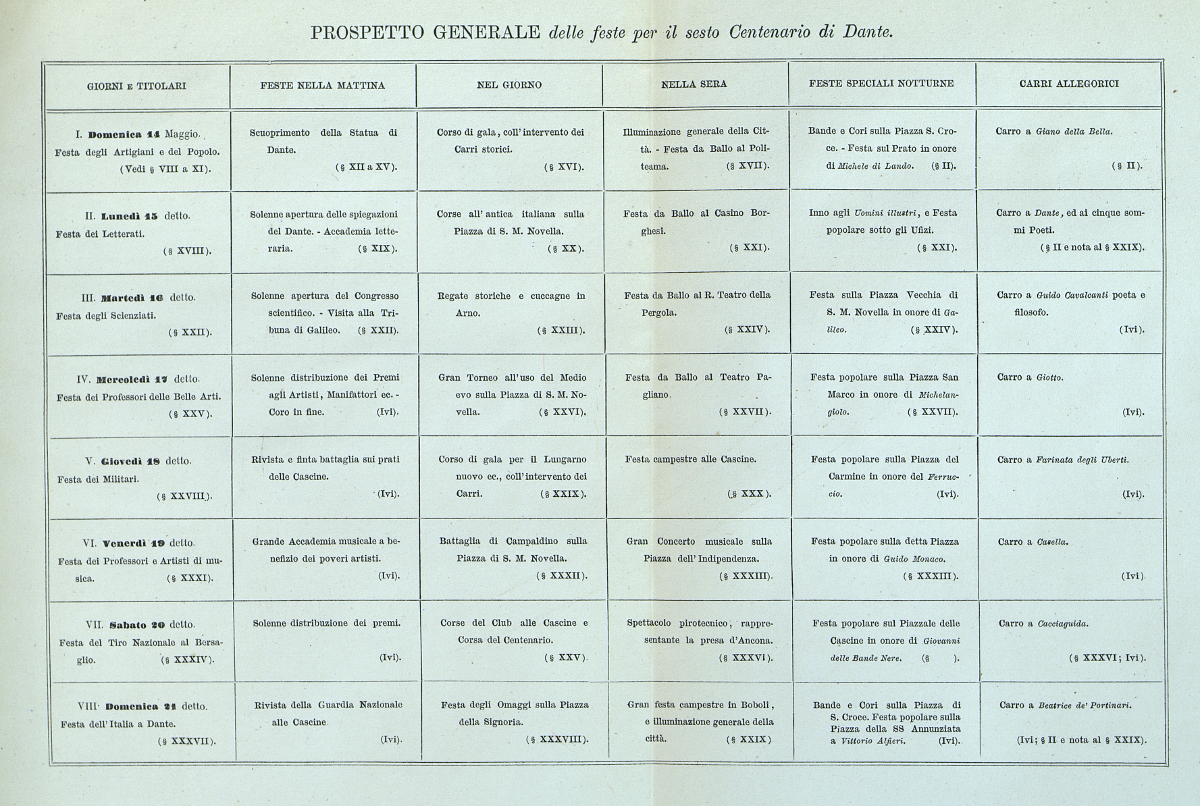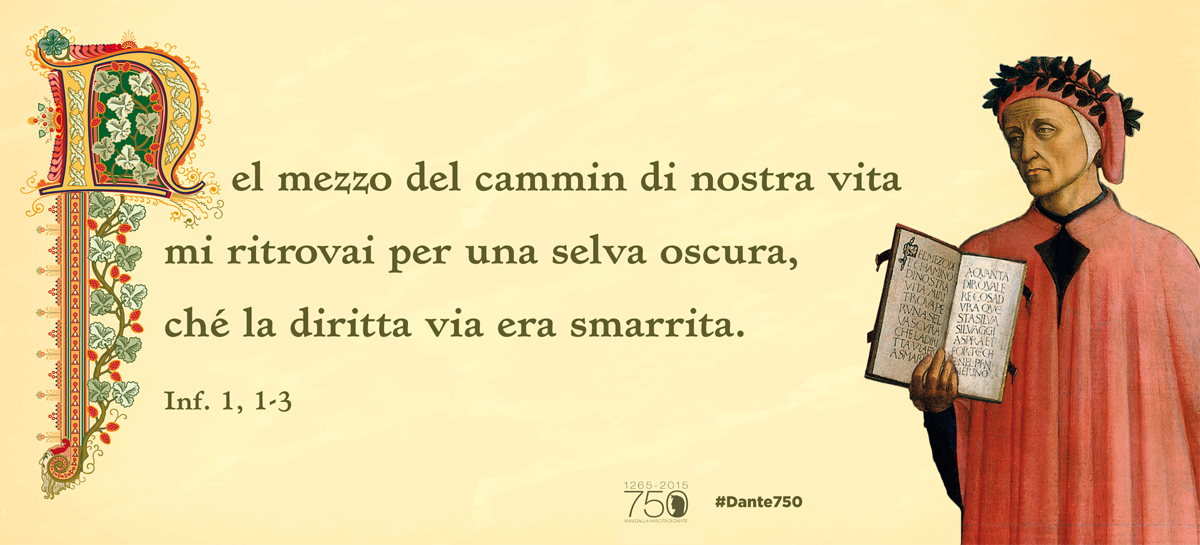
That 14 May 1865
Of all this there was no inkling on that 14 May 1865, when the monument to Dante Alighieri was inaugurated in Piazza Santa Croce. Florence had been identified, for its prestige and its geographic position, as the ideal place to transfer power, removing the 'Piedmontese' and 'Northerner' stain from the House of Savoy, and the celebration of the 'great poet' represented a wonderful opportunity to legitimise and sanctify the new capital. It was no coincidence that King Vittorio Emanuele II attended the ceremony, emphasising the assumption of Dante as the foundation of the national identity both for his ability to transform the ‘vulgar’ language into something extraordinarily expressive and for the political demands of an Italy able to overcome particularism and redeem itself from subjection to the great powers.
To cement this founding pact, a parade was held in the square that day with the banners of all the Italian cities for a spectacular scene of great beauty, to be recreated once more in the celebrations planned this year.
The monument depicts a clearly frowning Dante with a look of reproach and recrimination, which is why the work, originally commissioned by the municipality of Ravenna (home to Dante’s remains and in constant competition with Florence for control of the poet’s memory), was rejected by Vatican authorities (Ravenna and the entire Emilia Romagna then belonged to the Papal States), who feared the frown could be interpreted as an invitation to subversion. The author was the sculptor Enrico Pazzi and its position in the middle of Piazza Santa Croce was an obvious tribute to the basilica of the same name and the pantheon of national glories buried there, which received, in Foscolo’s Sepolcri, a celebration drenched in romantic and patriotic instances.
From that position, Dante would move only a century later, in 1967, to the left side at the front of the basilica. Two years before that, the image of Dante emerging from a piazza completely flooded by more than three metres of water circulated around the world as a symbol of the terrible tragedy that hit Florence on 4 November 1966: the flood. That sullen and combative face overlooking the threatening waters represented on that occasion the determination and desire to rebuild of the Florentines, a people who always give the best of themselves in the most disadvantageous situations. And who better than Dante to symbolise this trait?
The City of Florence Archive
The Giornale del Centenario di Dante Allighieri was published in Florence from February 1864 to June 1865 and prepared a national solemnity for the birth of Dante, seen as the father of the Italian language and thus, indirectly, the father of the nation which, with the Risorgimento, had been incorporated into the State. Moving the capital to Florence - albeit determined by factors of international politics and not sought (and even feared) by the ruling Tuscan elite with the peaceful revolution of 27 April 1859 - had made a decisive contribution to the construction of the unitary state - implicitly sanctioning the link between language and nation and therefore the national role of Florence and Tuscany
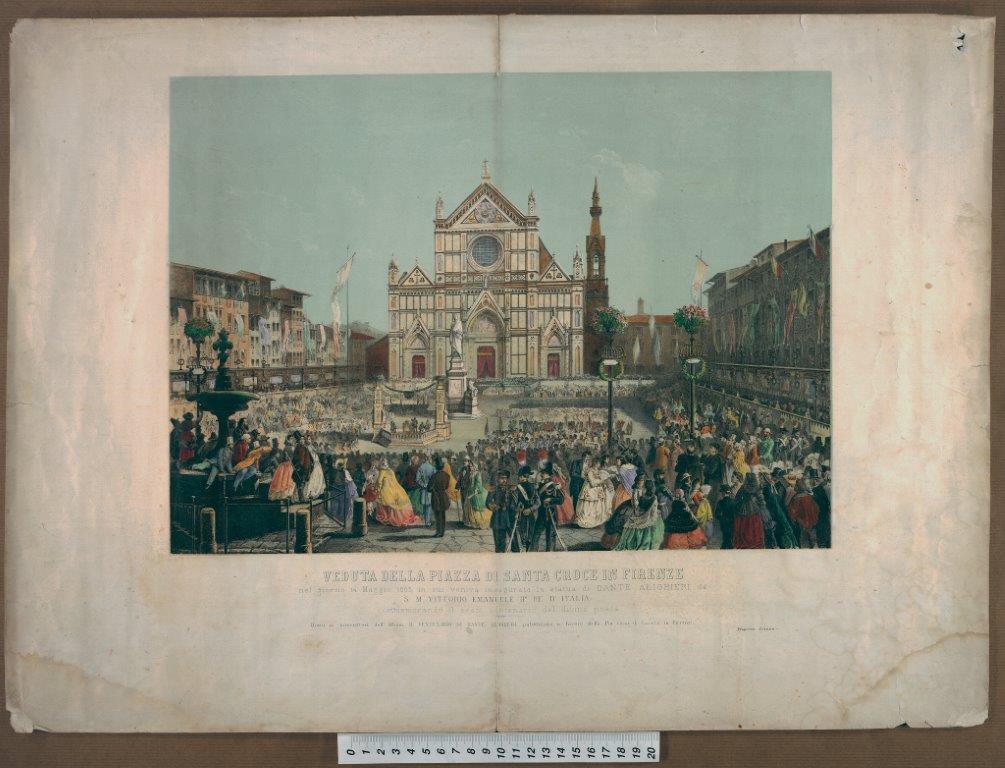
View from Piazza di Santa Croce on 14 May 1865
during which the statue of Dante Alighieri was inaugurated by SM Vittorio Emanuele II, King of Italy, commemorating the sixth centenary of the divine poet’s birth - A gift for subscribers to the Album Il Centenario di Dante Alighieri published by Pia casa di Lavoro in Florence
Print, drawing on matte paper in lithography, watercolour; 479mm x 654mm: O. Dressler

Front cover of the Relazione della Commissione Governativa eletta a verificare il fatto del ritrovamento delle ossa di Dante a Ravenna from 1865
La Relazione della commissione governativa eletta a verificare il fatto del ritrovamento delle ossa di Dante in Ravenna is part of a file that contains correspondence between the mayor of Ravenna, that of Florence and the Minister for Public Instruction published following the discovery of a box bearing the inscription "Dantis ossa" (Dante’s bones) dated 1677 on 27 May 1865 during the demolition of part of an ancient chapel at Dante’s tomb in Ravenna.
Archivists Roberta Barbis and Barbara Grazzini carried out an investigation into the contents of the file just before it was loaned out for the "Una volta nella vita" exhibition held in the Palazzo Pitti in 2013.



